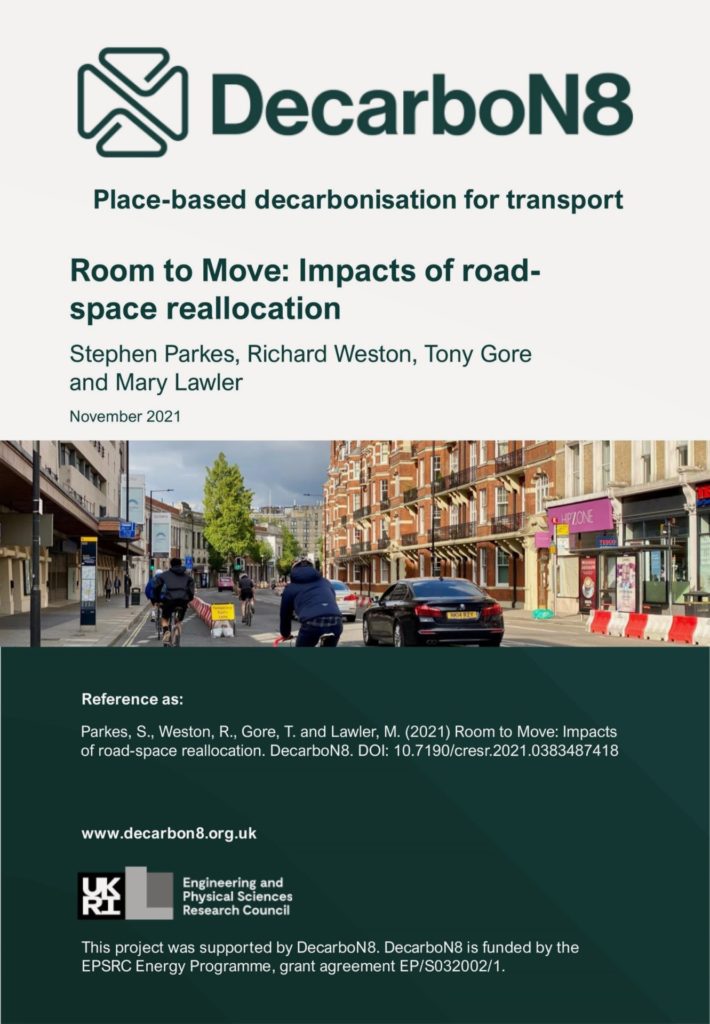
Report: Room to Move: Impacts of road-space reallocation
Authors: Stephen Parkes, Richard Weston, Tony Gore, Mary Lawler (2021)
PDF (40 pages, 1 MB)
The Covid-19 pandemic and associated national lockdowns rapidly reduced personal mobility and led to a rethinking of travel behaviours, at least for the short-term. Whilst on-going uncertainty makes longer-term planning difficult, this project looks back to establish the impacts of the pandemic on two contrasting local authorities in the North of England: Lancashire and Sheffield. Through a three-wave longitudinal panel study, this project has examined changes in travel behaviour emerging from the pandemic, the role and effect of temporary road-space reallocation measures and begins to explore what the resulting longer-term impacts are.
Key Findings
The first national lockdown led to a significant shift in behaviours. Across both Lancashire and Sheffield, whilst the overall number of trips for commuting and shopping declined, the use of private transport (cars/vans) and active modes (including walking/cycling) increased. The overall changes in behaviour were more pronounced in Sheffield, particularly in relation to increasing use of active travel.
In the short-term, across all journey purposes, there were signs that the widespread changes made to the usual destinations travelled to were sustained. Of those who made changes to any of their usual destinations, half had sustained these changes as they emerged from the first lockdown, indicating that the lifting of restrictions did not lead to a rapid shift back to pre-pandemic habits.
Whilst private transport saw an increase in use, active modes also experienced greater interest, including from those who didn’t utilise these modes pre-pandemic. Those not using active modes for certain journeys before the pandemic subsequently tried and sustained, in the short-term at least, shifts to these low carbon modes. This was particularly relevant for those walking for shopping or leisure journeys.
Distance from the temporary measures meant that many people did not make use of them, despite awareness of them being high across both case-study areas. 70% of the sample across both case-study areas were aware of the measures but only 32% used one. People that did use the measures rated them overwhelmingly positively, with measures that removed traffic the most highly regarded.
In the longer-term, the private car is still the most popular mode for all journey purposes, although it is still to return to pre-pandemic levels for some journeys. Active travel has become more popular for leisure, whilst public transport use is still well below pre-pandemic levels. However, there has been a small increase in the numbers using public transport recently. Looking ahead the picture remains unclear, particularly with regards to longer-term trends in working practices and whether the recent popularity of walking and cycling will continue.


